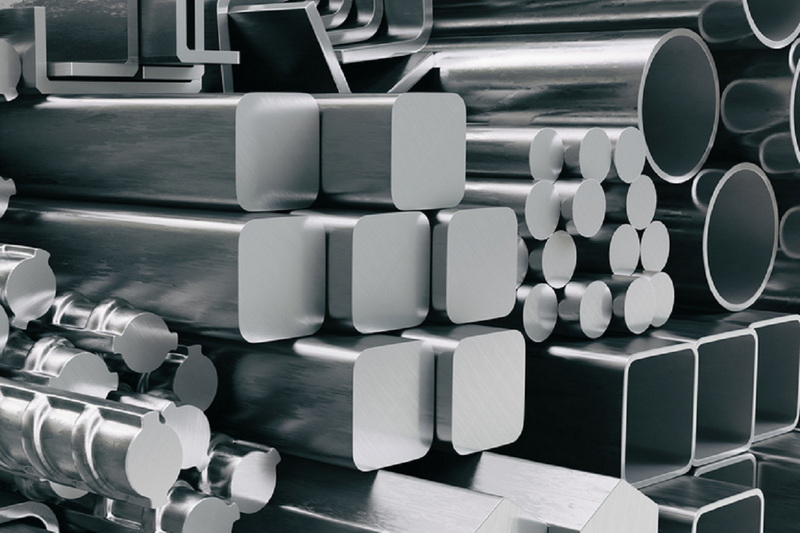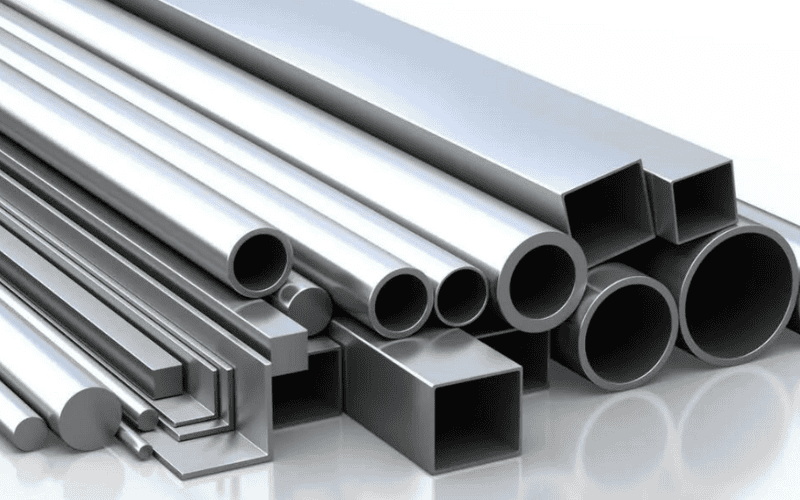English


Views: 222 Author: Tomorrow Publish Time: 2025-07-17 Origin: Site











Content Menu
● Composition Differences Between 304 and 316
● Corrosion Resistance and Durability
>> Real-World Impact of Corrosion Resistance
● Mechanical Properties and Performance
● Ease of Fabrication and Welding
>> 304 Stainless Steel Is Ideal For:
>> 316 Stainless Steel Is Best For:
● Environmental Considerations
● Summary: Which Stainless Steel Suits Your Project?
● FAQ
>> 1. What is the main chemical difference between 304 and 316 stainless steel?
>> 2. Which stainless steel is better for marine applications?
>> 3. Can 304 stainless steel be used outdoors?
>> 4. Is 316 stainless steel worth the extra cost?
>> 5. Are both 304 and 316 stainless steel magnetic?
When it comes to selecting stainless steel for your project, choosing between 304 and 316 grades can significantly impact both performance and cost. Both are austenitic stainless steels widely used across many industries, yet they have distinct differences in composition, corrosion resistance, application areas, and price. Understanding these factors is essential to match the right grade to your specific needs.

Stainless steel is an alloy primarily made of iron, chromium, and other elements. A minimum of 10.5% chromium forms a thin, invisible chromium oxide layer on the surface, protecting the steel from rust and corrosion. The variations in the alloying elements beyond chromium define the grade and its properties.
Stainless steel is broadly classified based on its crystal structure into austenitic, ferritic, martensitic, duplex, and precipitation hardening types. Grades 304 and 316 both belong to the austenitic family, known for their excellent corrosion resistance, non-magnetic properties, and good mechanical strength, making them the most widely used stainless steels in industries today.
The chemical composition is the foundation for understanding the functional differences between these two grades.
Grade 304 stainless steel is the most common stainless steel globally. It typically contains:
- 18% Chromium
- 8% Nickel
- Small amounts of carbon, manganese, silicon, phosphorus, and sulfur
The chromium creates a protective oxide film that guards against rust, while nickel stabilizes the austenitic structure, improving toughness and corrosion resistance. This balance provides good corrosion resistance and excellent formability, allowing 304 to be fabricated into a wide range of shapes and products.
Grade 316 differs by containing:
- Approximately 16% Chromium
- Higher Nickel content (~10%)
- 2% to 3% Molybdenum
- Trace amounts of carbon, manganese, silicon, phosphorus, sulfur
The inclusion of molybdenum is the critical factor setting 316 apart. Molybdenum enhances resistance against chlorides and acidic environments by improving pitting and crevice corrosion resistance. This means 316 is ideal for more aggressive or saline environments where 304 may fail prematurely.
Corrosion resistance is arguably the most important factor when deciding between 304 and 316 stainless steels. The environments your project will face are crucial to this choice.
- 304 Stainless Steel offers robust corrosion resistance to atmospheric conditions, many oxidizing acids, and most food products. It's widely used indoors or in environments free from harsh chemicals and salty exposure.
- 316 Stainless Steel excels in resisting chlorides, sulphuric acid, and salt environments. It is preferred in marine, chemical processing, and pharmaceutical applications. Its molybdenum content significantly reduces pitting corrosion caused by chloride ions.
Pitting corrosion, a localized form of corrosion leading to perforation, occurs when chloride ions breach the passive oxide layer. 316's molybdenum tightens this layer's resistance, dramatically improving longevity.
In coastal or industrial atmospheres laden with chloride salts, using 304 stainless steel may lead to rust spots or corrosion pits within a few years. This not only degrades the material's appearance but compromises structural integrity.
On the other hand, 316 can withstand such environments for decades without significant corrosion, justifying its higher initial cost for long-term applications.
304 and 316 stainless steels have similar mechanical properties that make them versatile choices for many manufacturing processes.
- Tensile strength for both grades typically ranges between 500 and 750 megapascals (MPa), ensuring high durability.
- Yield strength is also comparable, allowing the metals to endure significant stress before deformation.
- Ductility and formability are excellent in both grades, which means they can be bent, welded, and shaped without cracking or significant loss of strength.
- Both types generally remain non-magnetic due to their austenitic structure; however, welding and cold working can induce slight magnetic characteristics in them.
The melting point of 304 is around 1450°C, a bit higher than that for 316, which melts around 1370–1399°C. Although this difference doesn't often affect general applications, it can be relevant in high-temperature manufacturing processes.

Both grades are highly workable and can be welded using standard techniques. However, due to their composition differences, slight variations exist:
- 304 stainless steel welds easily and maintains corrosion resistance after welding with minimal need for post-weld treatments.
- 316 stainless steel requires more attention in welding due to its higher nickel and molybdenum content. Slow cooling and post-weld annealing may be necessary in some cases to maintain corrosion resistance and mechanical properties.
In terms of machining, 316 is somewhat harder to machine than 304 due to its strength and alloying elements, potentially increasing fabrication time and cost.
Price is a critical factor when selecting between 304 and 316 stainless steel.
- 304 stainless steel is less expensive and more widely available. It offers excellent value for general-purpose applications where high corrosion resistance to chlorides is not required.
- 316 stainless steel is pricier, mainly due to molybdenum's cost. However, in specialized environments, 316's longer lifespan and lower maintenance can offset the upfront cost increases.
When budgeting for large-scale or critical projects, the life-cycle cost, including maintenance, replacement, and downtime, should be weighed more heavily than just the material price.
Understanding where 304 and 316 are typically used helps clarify their differences and strengths.
- Food processing equipment: Sinks, counters, ovens, and kitchen utensils where mild corrosion resistance and sanitary surfaces are needed.
- Architectural details: Interior handrails, trim, and decorative facades.
- Water handling systems: Pipes, tanks, and valves for freshwater and mildly corrosive fluids.
- Automotive parts: Exhausts, trim, and wheel covers.
- Chemical containers: For non-aggressive media.
- Marine environments: Boat fittings, docks, and coastal architectural elements exposed to saltwater.
- Pharmaceutical and medical equipment: Surgical tools, implants, sterile environments needing high corrosion resistance and bio-inertness.
- Chemical processing: Reactors, tanks, and piping dealing with acids, solvents, and chlorides.
- Food processing: Marine-based or highly acidic food manufacturing.
- Wastewater treatment: Equipment exposed to aggressive chemicals and salts.
Selecting 304 or 316 also depends on the environment in terms of temperature, humidity, and exposure to pollutants.
- In environments with fluctuating temperature or humidity but no exposure to chlorides, 304 is sufficient and cost-effective.
- In coastal areas, industrial pollution, or chemical plants where exposure to sulfur compounds, salts, or acids is common, 316 offers valuable longevity and safety.
- Opt for 304 Stainless Steel if your project involves *standard indoor environments*, food equipment, or applications without exposure to high chloride or acidic conditions. Its combination of strength, workability, and cost-efficiency make it the default for many projects.
- Choose 316 Stainless Steel for *harsh chemicals, saline, or coastal environments* that demand enhanced corrosion resistance and durability. Its resistance to pitting and crevice corrosion make it reliable for long-term industrial and marine usage.
The decision should balance environmental conditions, mechanical and chemical requirements, aesthetic demands, and budget constraints to optimize your project's success.
Both 304 and 316 stainless steels are exceptional materials with broad application ranges. While 304 is the economical and versatile option suitable for most projects, 316 stainless steel offers exceptional corrosion resistance thanks to molybdenum, enabling it to excel in aggressive chemical or marine environments. Understanding your project's specific environmental challenges and durability requirements is critical to choosing the stainless steel grade that suits your needs best. Making the right choice results in better longevity, reduced maintenance costs, and ensures safety and hygiene—especially important in stringent industries like food processing and healthcare.

304 contains 18% chromium and 8% nickel, while 316 contains slightly less chromium, more nickel, and adds 2-3% molybdenum for enhanced corrosion resistance.
316 stainless steel is better because molybdenum offers superior resistance to saltwater and chloride-based corrosion.
Yes, 304 can be used outdoors but may show signs of corrosion in highly salty or chloride-rich environments; 316 is recommended in those cases.
Yes, if your project requires durability in corrosive or marine environments, the longer lifespan and reduced maintenance can justify the initial higher cost.
Both are generally non-magnetic, as they are austenitic stainless steels. However, cold working or forming can induce slight magnetic properties.
Stainless Steel Grades 201 Vs 304: Cost Vs Performance Breakdown
316L Vs 316 Stainless Steel Grades: Which Is Better for Corrosion Resistance?
Comparing Austenitic Vs Martensitic Stainless Steel Grades: What You Need To Know?
Stainless Steel 430 Vs 304: Key Differences Explained for Manufacturers
304 Vs 316 Stainless Steel Grades: Which One Suits Your Project Best?
Stainless Steel Pipes Vs Galvanized Pipes: Durability And Cost Analysis
Comparing Stainless Steel Pipes And PVC Pipes: What You Need To Know?
Stainless Steel Pipes Vs Copper Pipes: Pros And Cons for Industrial Use
Seamless Stainless Steel Pipes Vs Welded Pipes: Key Differences Explained
Stainless Steel Pipes Vs Carbon Steel Pipes: Which One Suits Your Project?
